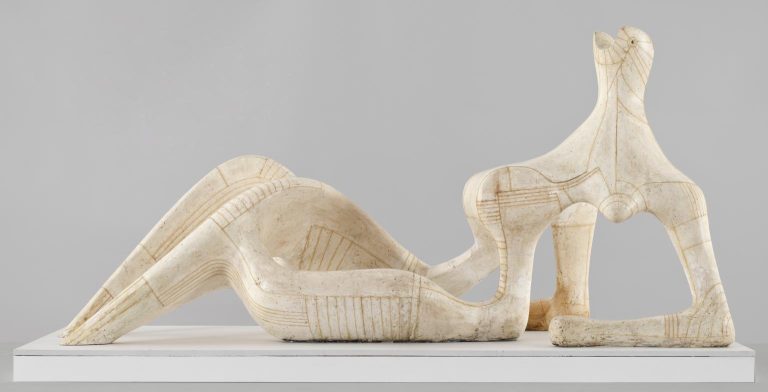Henry Moore: a Pioneer of Modern Sculpture
Henry Moore, renowned for his monumental bronze sculptures, has significantly influenced various art forms, including modern fashion. His exploration of organic forms, voids, and the interplay of light and shadow has resonated deeply within the fashion industry, inspiring designers to integrate these elements into their collections. The relationship between sculpture and fashion extends beyond mere aesthetic similarities. Both disciplines share a fundamental interest in the human form, space, and movement, making Moore’s work particularly relevant for fashion designers seeking to innovate and push the boundaries of traditional garment construction.
Moore’s Aesthetic and Fashion Resonance
Moore’s sculptures, characterized by their smooth, organic shapes and fluid lines, have inspired fashion designers to adopt similar silhouettes and forms. This is evident in collections featuring draped garments, asymmetric lines, and soft, enveloping shapes that echo Moore’s sculptural aesthetic. Moore’s use of negative space and his fascination with creating forms that play with light and shadow have influenced fashion designers to experiment with cutouts, sheer fabrics, and layering, creating garments that transform the body into a living sculpture.
Inspired by Moore
Yves Saint Laurent, one of the first designers to draw direct inspiration from Moore’s work, incorporated sculptural silhouettes and voluminous shapes into his designs, redefining femininity and elegance in the process. Alexander McQueen’s collections often reflected a deep appreciation for Moore’s exploration of form and structure. McQueen’s ability to create wearable art pieces showcased a shared interest in challenging conventional perceptions of the human figure.
In a direct homage to Moore, J.W. Anderson’s collaboration with the Henry Moore Foundation for his Fall/Winter 2017 collection saw the translation of Moore’s sculptures into wearable forms, incorporating both the aesthetic and philosophical aspects of the artist’s work. Issey Miyake’s innovative pleating techniques and organic shapes bear a striking resemblance to Moore’s sculptures. Miyake’s designs often mirror the fluidity and dynamic forms found in Moore’s work, emphasizing movement and the natural contours of the body.
Fashion Shows and Editorials
Fashion shows have increasingly become platforms for artistic expression, with designers like Iris van Herpen and Rick Owens presenting collections that reflect Moore’s influence through intricate designs that resemble sculptural forms and textures. Fashion editorials have also drawn inspiration from Moore’s work, using his sculptures as backdrops or thematic references to create striking visual narratives that bridge the gap between art and fashion.
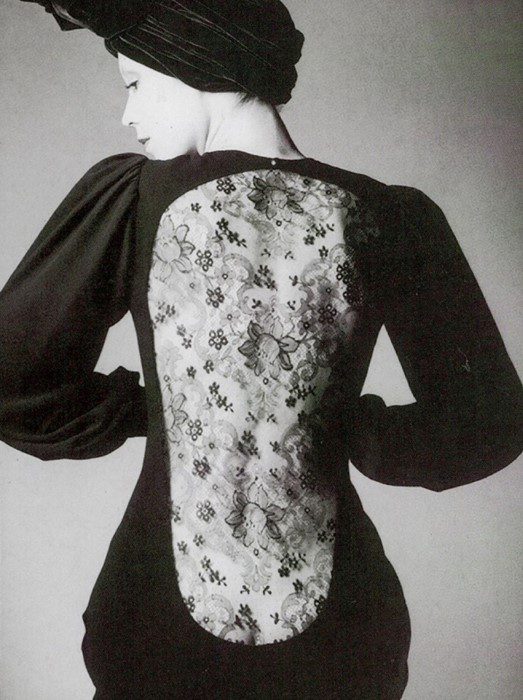
Black crepe cocktail dress with nude lace back, 1971
Photography by JEANLOUP SIEFF
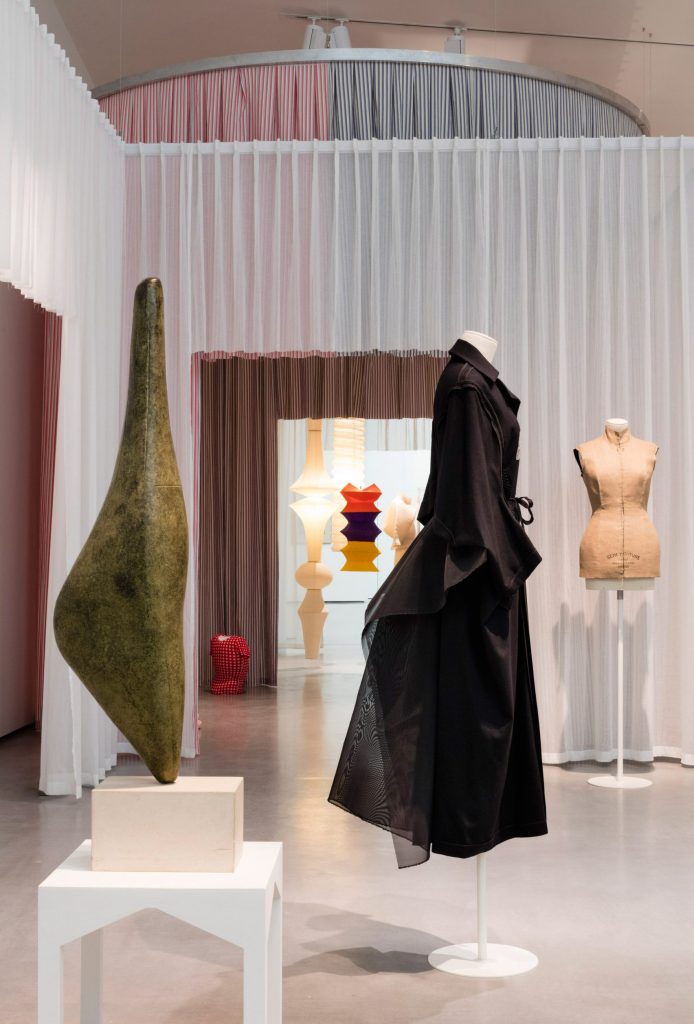
Courtesy of HEPWORTH WAKEFIELD
Photography by LEWIS RONALD

Men’s Fall/Winter 2020
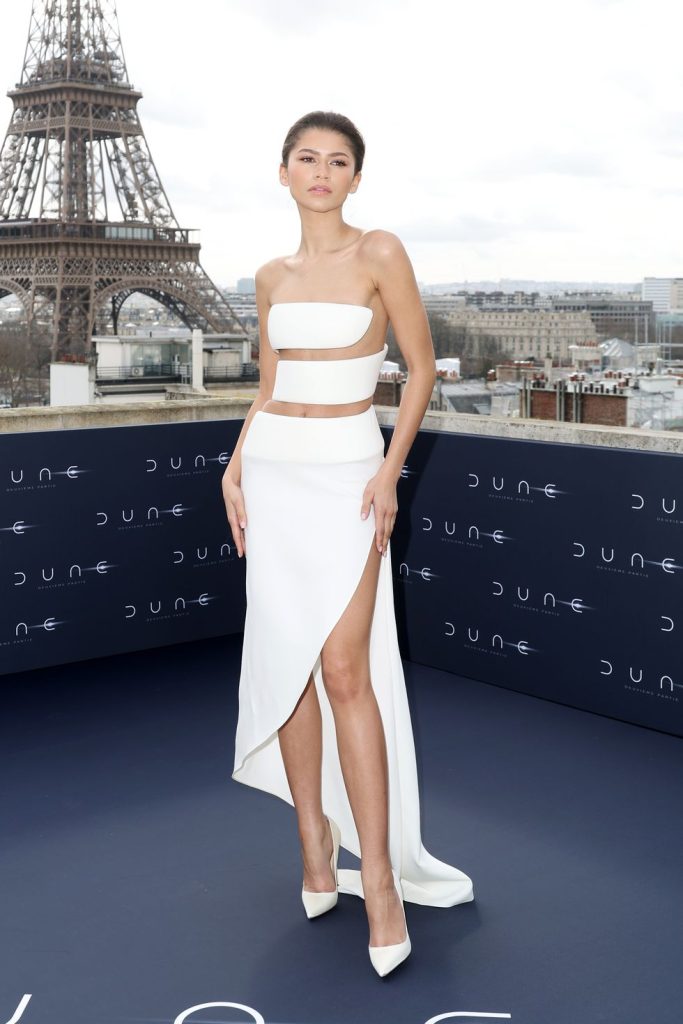
Photography by PASCAL LE SEGRETAIN
Courtesy of GETTY IMAGES
Material and Texture
The tactile qualities of Moore’s sculptures have inspired designers to experiment with innovative materials and textures. The incorporation of unconventional fabrics, such as neoprene, silicone, and sculpted textiles, reflects Moore’s textural diversity. Echoing the bronze and wood used in Moore’s sculptures, fashion designers have embraced metallic fabrics and natural fibers to replicate the contrast between industrial and organic, rigid and soft, found in Moore’s work.
Accessories
Jewelry designers have also found inspiration in Moore’s sculptures, creating pieces that mimic his abstract forms and organic shapes. These accessories serve as miniature sculptures themselves, emphasizing the wearable art concept. Footwear and bags have not been immune to Moore’s influence, with designers creating sculptural yet functional items that reflect the artist’s aesthetic. These pieces often feature bold, abstract forms and innovative structures that challenge traditional accessory design.
Educational Impact
Fashion design schools have recognized the value of integrating sculptural principles into their curricula, encouraging students to explore volume, form, and the relationship between the body and space, much like Moore did with his sculptures.
Student projects and graduate collections often cite Moore as a key influence, resulting in garments and collections that reflect his artistic philosophy and approach, demonstrating the enduring relevance of his work in fashion education.
Sculptural Influence in Fashion
As technology and new materials continue to evolve, the possibilities for sculpture-inspired fashion innovations grow. Designers are increasingly using 3D printing and other technologies to create garments that resemble sculptural art, pushing the boundaries of what is possible in fashion. Sustainability in fashion is leading to a new appreciation for forms and structures that are not only visually striking but also minimize waste and promote ethical production methods. This aligns with Moore’s artistic values, ensuring his influence will continue to resonate in the fashion world.
Timeless Impact
Henry Moore’s sculptures have left an indelible mark on modern fashion, with his exploration of form, space, and texture continuing to inspire designers around the world. His work serves as a reminder of the powerful dialogue between art and fashion, a conversation that is constantly evolving. The influence of Henry Moore on modern fashion is a testament to the ongoing dialogue between art and fashion. As both fields continue to inspire and inform each other, Moore’s legacy remains a beacon for designers seeking to explore the boundless possibilities of creativity and innovation.
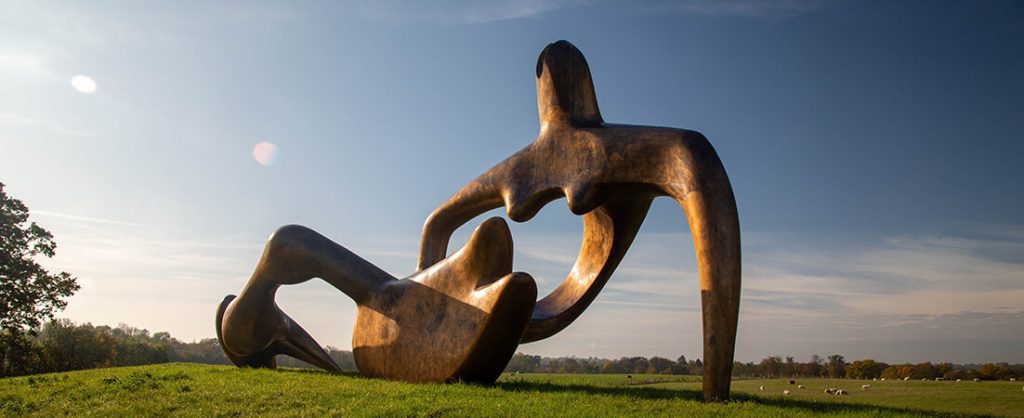
Large Reclining Figure, 1984
Courtesy of THE HENRY MOORE FOUNDATION
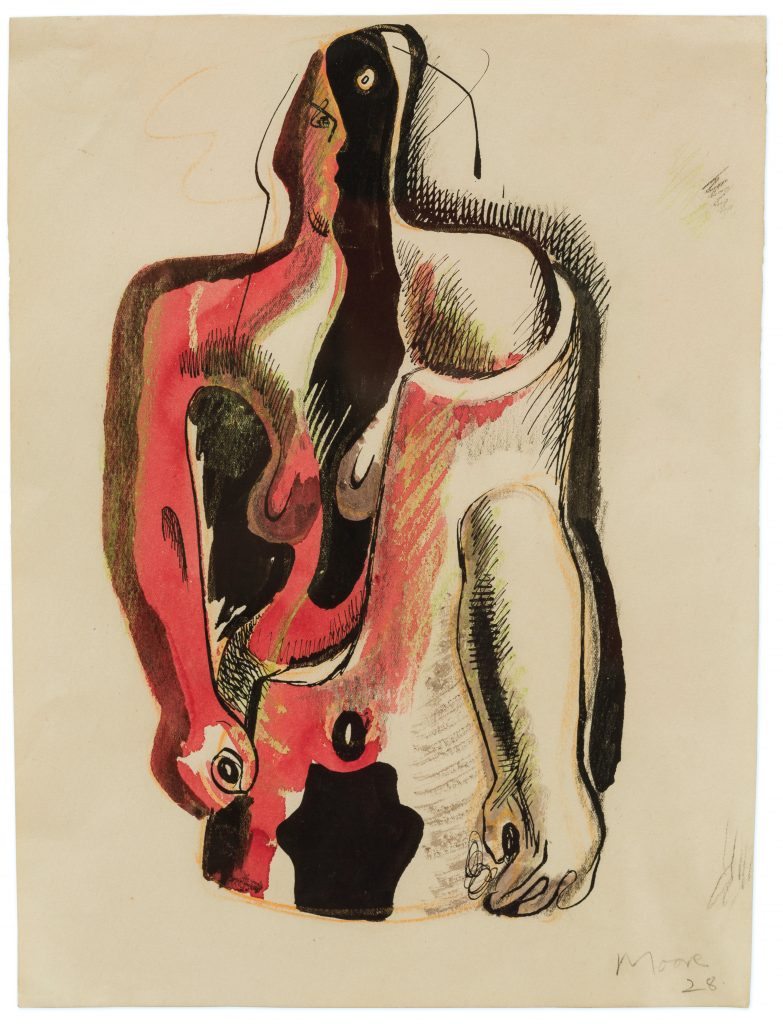
Three-Quarter Figure, 1928
Courtesy of THE HENRY MOORE FOUNDATION
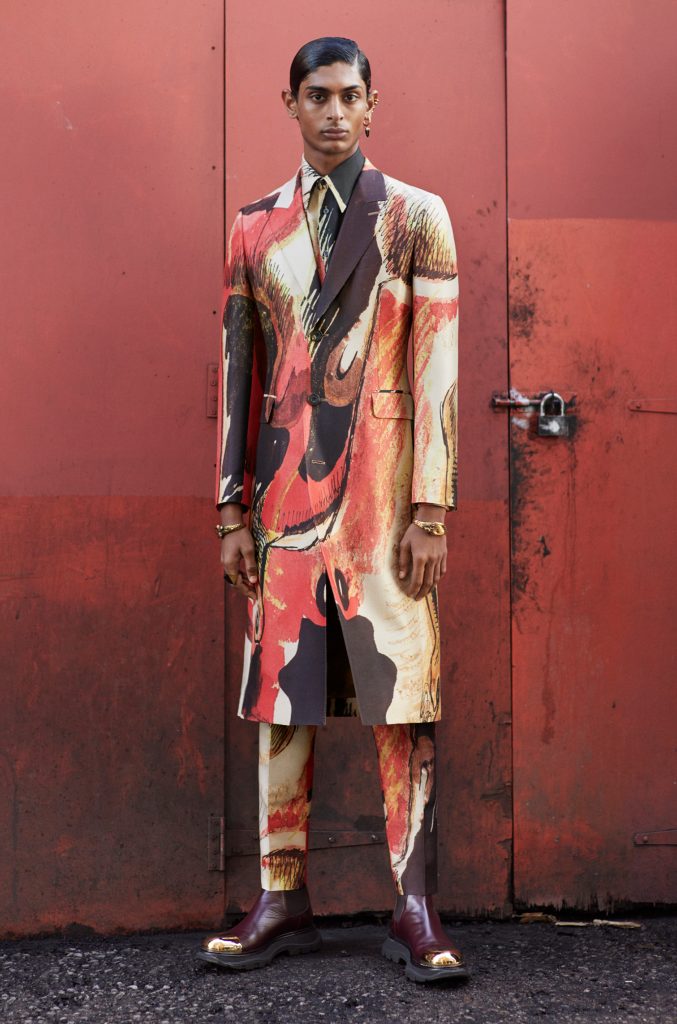
Men’s Fall/Winter 2020
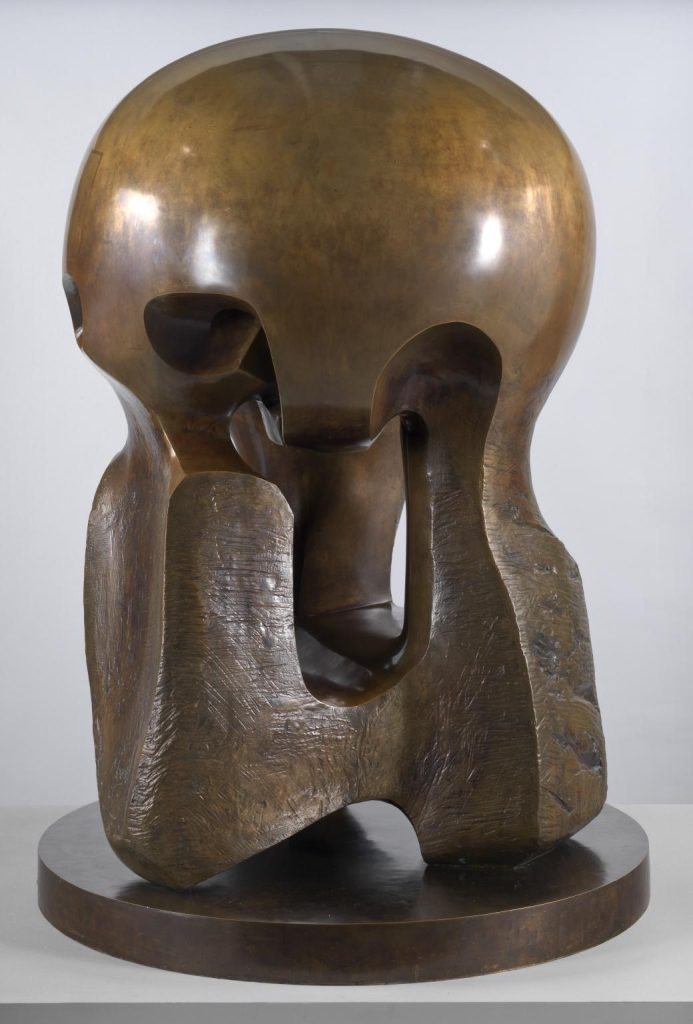
Atom Piece (Working Model for Nuclear Energy) 1964-1965
Courtesy of TATE GALLERY
